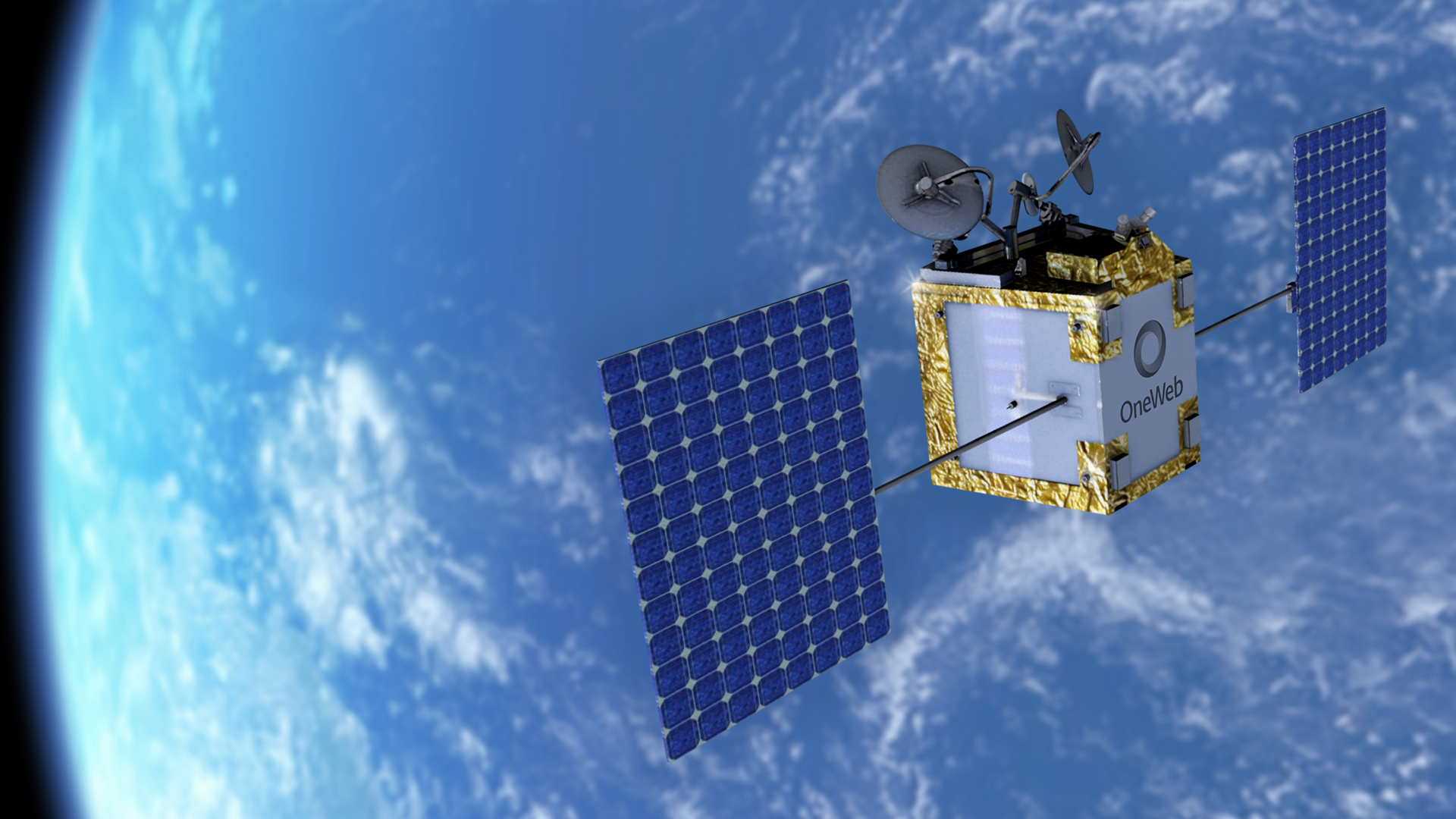TAMPA, Fla. — A OneWeb-led group has secured government funding to launch a beam-hopping satellite in 2022, demonstrating how a spacecraft could switch its coverage area in real-time to respond to surges in demand.
OneWeb, which has launched a third of its initial 650-strong constellation to low Earth orbit (LEO), said the so-called Joey-Sat spacecraft will test capabilities for a second-generation network it aims to start launching in 2025.
The UK Space Agency awarded the group 32 million British pounds ($45 million) for the pilot mission, through ESA’s Sunrise program.
OneWeb, partly owned by the British government, is teaming up with antenna maker SatixFy, ground station technology firm Celestia UK and satellite servicing startup Astroscale UK.
SatixFy is getting the largest share of the funding at 25 million British pounds to build Joey-Sat’s beam-hopping payload and user terminal.
According to SatixFy, the technology is the next step for high throughput satellites (HTS) that have been developing spot beam technology over the last decade.
Joey-Sat’s design will enable it to remotely direct beams to increase capacity at higher usage areas in response to commercial demand spikes or emergencies such as natural disasters.
In March, SatixFy agreed to build an in-flight connectivity terminal for OneWeb that will work with its LEO constellation, as well as geostationary (GEO) satellite systems operated by others.
“From helping during a disaster to providing broadband on planes, this amazing technology will show how next-generation 5G connectivity can benefit all of us on Earth,” U.K. Science Minister Amanda Solloway said in a statement.
“It is fantastic to see some of our finest space tech companies joining forces on this exciting project which will put the UK at the forefront of satellite communications technology.”
SatixFy also entered a deal in March with Canadian satellite operator Telesat, giving it early access to modem chips that can support beam hopping for the Lightspeed LEO constellation it is developing.
Celestia secured 4.4 million British pounds in Sunrise funding to trial ground station technology featuring a multibeam electronically steered antenna.
Astroscale got 2.5 million British pounds to develop technologies that could safely de-orbit unresponsive satellites like Joey-Sat.
Its funding will support a servicing spacecraft it is developing called ELSA-m, which will demonstrate capabilities in 2024 for removing multiple retired satellites in a single mission.
Astroscale’s ELSA-d servicer is currently in orbit, planning to conduct its first end-to-end test of technologies for debris removal this summer.
“This ambitious project with OneWeb is the next step towards maturing our technologies and refining our UK capabilities to develop a full-service Active Debris Removal offering by 2024,” Astroscale UK managing director John Auburn said.
Auburn added: “This multi-client strategy will drive down service costs and incentivise large satellite constellation partners to accelerate the speed at which they remove space junk.”
Currently, Astroscale’s spacecraft can only latch onto satellites with compatible docking plates, and OneWeb is so far the only constellation that has added them to its spacecraft.
U.K. space boost
The U.K. government sees debris cleanup and other emerging space markets as an important part of its strategy to capture 10% of the world’s space economy by 2030.
In its latest update on reaching this target, included in its “Size and Health of the UK Space Industry” report published May 19, the government said its share sood at 5.1%.
The report covers the 2018-2019 financial year, meaning the data it obtained from organizations could be for any 12-month period within those years.
The U.K.’s share of the world’s space market was unchanged from its last update, covering the 2017-2018 financial year, as growth matched that of the global industry.
Income increased 5.7% over the period to 16.4 billion British pounds, while the number of organizations with space-related activity increased from 948 to 1,218.
Space-related employment grew from 41,900 to 45,100 over the period. The amount of industry research and development investments surged 18% to 702 million British pounds, which it said was five times the national average intensity.
“The UK space industry is booming and this strong growth is a key part of our plans to level up and build back better from the pandemic, creating thousands of high value space jobs in regions right across the UK,” Solloway said in a statement that joined the report.
“As we look to fulfil our bold ambitions for space, including the first satellite launches from UK soil next year, I look forward to seeing the sector growing further with more young people pursuing exciting careers in space, all while helping to cement the UK’s status as a global space superpower.”
The report, based on surveys conducted by consultancy know.space, also looked at diversity for the first time and found just 36.5% of space industry employees in the U.K. identify as female.
